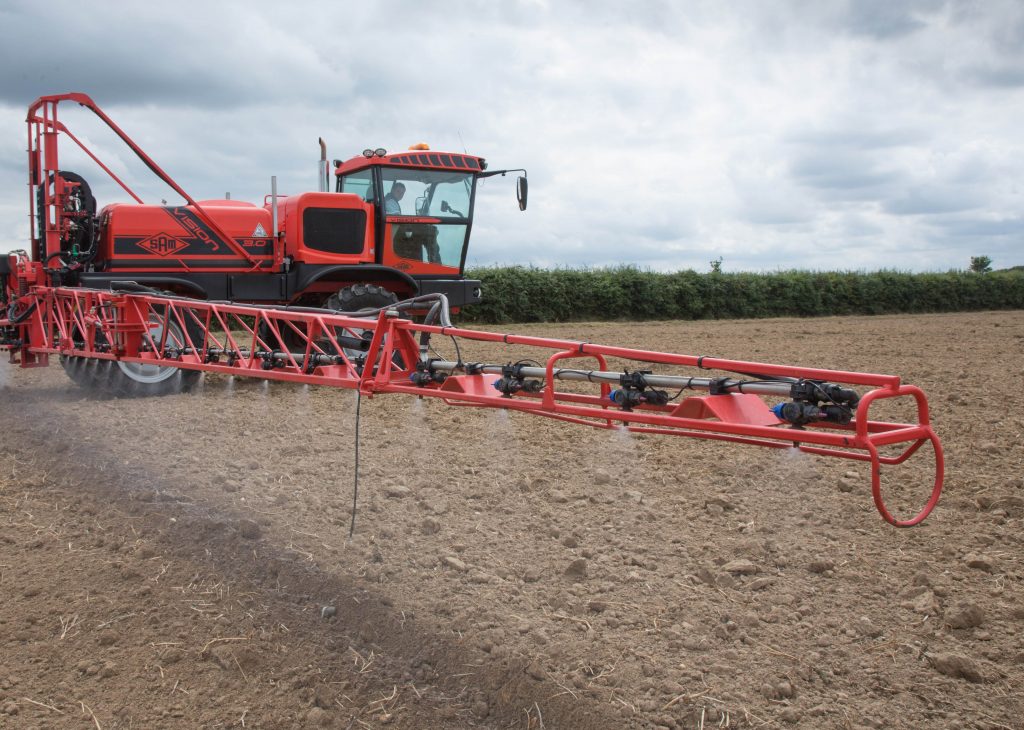Lincs farm spray application meetings to target improvement in pre-em results
30th May 2018
Lincolnshire farmers and growers have the opportunity to learn how to get the best from their pre-emergence herbicide applications, with a series of spray application meetings dedicated to achieving better
Lincolnshire farmers and growers have the opportunity to learn how to get the best from their pre-emergence herbicide applications, with a series of spray application meetings dedicated to achieving better results and more timely applications.
The region’s flat topography and large, uninterrupted fields – which make its farmland so productive – also create a huge challenge for sprayer operators to minimise the risk of drift – particularly with autumn pre-emergence herbicide applications targeted at bare soil.
A series of three meetings in June, open to all farmers, agronomists and operators, will detail the latest application techniques – as well as the chance to pick up a free spray goodies bag, take part in an exclusive nozzle offer and gain important NRoSO points.
| Wednesday 20 June | Old Leake, BOSTON | hosted by J W Grant |
| Friday 22 June | Holbeach, SPALDING | hosted by Worth Farms |
| Friday 29 June | Swineshead, BOSTON | hosted by Grimme |
| To book a place contact a local Syngenta Area Manager, or phone 0800 652 4216 or email syn.events@syngenta.com | ||
Results of new application trials have shown how operators can enhance the efficacy of grass weed control by adapting their spray techniques, to ensure more spray hits the intended target, according to Syngenta Eastern Region Application Specialist, Harry Fordham.
“With any pre-emergence it’s all about getting the maximum amount of product on the ground, with even coverage of the soil surface,” he advocated. “One of the primary issues is drift, which takes product away from the target and reduces the potential efficacy of the treatment.”
Harry pointed out that drift risk is typically greatest with pre-emergence treatments because there is no crop to intercept and trap spray droplets. That can be compounded by the persistently windy conditions across Lincolnshire that frequently limits spraying opportunities with conventional nozzle technology.
Furthermore, cooling weather conditions in the autumn often result temperature differentials that can lead to warm air from the soil rising up and lifting fine spray droplets produced by flat fan nozzles into the air, where they can be carried away – even in relatively light winds.

Harry Fordham.
“In reality, a proportion of the low velocity small droplets may never reach the target,” Harry warned. “However, operators have the capability to set up their sprayer to minimise drift and, importantly, to enhance the efficacy of all pre-emergence applications.”
Harry also pointed out that growers and operators have an obligation to minimise risk of drift to prevent spray movement into ecological areas or non-target crops, as well as protecting the future regulatory approval of important herbicide options.
Controllable factors pinpointed to help operators minimise spray drift are a combination of forward speed, boom height and nozzle choice. Added to that, water volume is another operator-controlled variable where new Syngenta trials have shown improved efficacy for black-grass control.
“The mantra for all operators to follow is Go Low; Go Slow; Get Covered,” he advised.
He reported trials have shown that smaller, 03 size, versions of some 90% Drift Reduction Nozzles can be effectively operated as low as 100 l/ha, but for the optimum balance between product efficacy and sprayer output, he would advocate application at 200 l/ha using an 05 nozzle where practical.
| Top Tips to optimise coverage of the soil surface and reduce drift include:
· Boom height Consistent 50cm · Forward speed No more than 12 km/hr · Nozzle choice & Water volume Fit 90% Drift Reduction Nozzles & apply at 200 l/ha |

